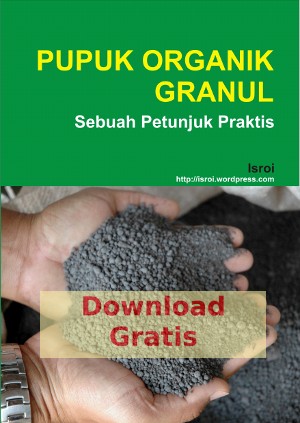Ethanol or ethyl alcohol (CH3CH2OH) is an important organic chemical because of its unique properties, and therefore can be used widely for various purposes. Under ordinary conditions, ethanol is a volatile, flammable, clear, colorless liquid, miscible in both water and non-polar solvents. Ethanol and ethanol-gasoline blends have a long history as automotive fuels. In the late 1800 for example, Henry Ford, Nicholas Otto and others built engines and cars that could run on ethanol (Solomon, Barnes, & Halvorsen, 2007).
The major component of lignocelluloses is cellulose, along with lignin and hemicelluloses. Cellulose and hemicelluloses are macromolecules from different sugars; whereas lignin is an aromatic polymer synthesized from phenylpropanoid precursors (Perez et al., 2005). Cellulose or -1-4-glucan is a polymer of glucose made of cellobiose units with about 2,000 to 27,000 glucose residues. These chains are packed by hydrogen bonds in so-called ‘elementary fibrils’ originally considered to be 3 – 4 nm wide and contain about 36 chains. These elementary fibrils are then packed in so-called microfibrils, where the elementary fibrils are attached to each other by hemicelluloses, amorphous polymers of different sugars as well as other polymers such as pectin and covered by lignin. The microfibrils are often associated in the form of bundles or macrofibrils (Taherzadeh & Karimi, 2007). In order to produce ethanol from lignocellulosic materials, we should (a) open the bundles of lignocelluloses in order to access the polymer chains or cellulose and hemicelluloses by a process of so-called pretreatment, (b) hydrolyze the polymers in order to achieve monomer sugar solutions, (c) ferment the sugars to ethanol solution by microorganism, and (d) purify ethanol by distillation and dehydration.
Lynd et al. (2005) has summarized the desirable properties for an ideal lignocellulose material after chemical pretreatment, i.e. it should (a) produce reactive fibers, (b) yield pentose in non-degraded form, (c) not release the compounds that significantly inhibit fermentation, (d) work in reactors of reasonable size with moderate cost, (f) produce no solid residues, (g) have a high degree of simplicity, and (h) be effective at low moisture contents. Pretreatment of lignocellulosic biomass for bioethanol production can be classified into three different type: physical pretreatment, physic-chemical pretreatment, chemical pretreatment, and biological pretreatment (Taherzadeh & Karimi, 2007; Keller, Hamilton, & Nguyen, 2003; Sanchez & Cardona, 2007).
Physical pretreatment of straw includes size reducing by chipping, grinding, or milling usually done in early conversion process. Another physical pretreatment are steam-exploded. It was found that high steam pressure for as short steaming time effectively enhanced enzymatic hydrolysis and alcohol fermentation of rice straw (Moniruzzaman, 1996). Zhu et al. (2005) combine microware/alkali pretreatment to produce ethanol from rice straw. Microwave/alkali pretreatment of rice straw provide high ethanol yield compared by alkali pretreatment alone. Chemical pretreatment was common pretreatment methods for lignocellosic biomass, i.e.: dilute-acid pretreatment (del Campo et al., 2006), acidified steam explosion, ammonia fiber explosion (Vlasenko et al., 1997), sulfuric acid (H2SO4), sodium hydroxide (NaOH), hydrogen peroxide (H2O2) and ozone pretreatment (Silverstein et al., 2007; Sassner et al., 2008).
Microbial pretreatments of lignocelluloses could reduce in degree of polymerization of hemicelluloses and cellulose, and delignification of lignocelluloses (Taherzadeh & Karimi, 2007; Keller, Hamilton, & Nguyen, 2003). Biological agents for biological pretreatment are mostly fungi or actinomycetes. The concept that fungal pretreatment lowers the energy requirements of thermochemical pulping of lignocellulosic biomass could potentially be applied to enzyme-based biomass conversion processes (Akhtar et al., 1998). White-rot fungi such as Coriolus versicolor, Phanerochaete chysosporium, Phlebia radiate, Pleurotus ostreatus, Pleurotus eryngii are known as typical lignin-degrading microorganism by the action of three lignolytic enzymes: lignin peroxidase, manganese peroxidase and laccase (Higuchi, 2004). Taniguchi et al. (2005) found that pretreatment of rice straw with P. oestreatus could improve enzymatic hydrolysis for ethanol fermentation. Biological degradation of rice straw depends on white-rot fungi themselves and physiological features associated with lignin biodegradation (Yu et al., 1994).
Conversion technologies of lignocellulosic biomass to ethanol fuel can be divided into two main categories: biochemical and thermochemical. However, there are considerable numbers of process variation within each of these categories (Wyman, 1994; Szczodrak & Fiedurek, 1996; Badger, 2002; Sanchez & Cardona, 2007; Taherzadeh & Karimi, 2007). Biochemical technologies for production of cellulosic ethanol involve hydrolysis of mostly the cellulose and hemicelluloses fraction of the biomass into their component sugars, fermentation of the resultant sugars into ethanol, and purification of the ethanol by distillation and dehydration. The hydrolysis step is often preceded by a pretreatment step to break up lignin and more readily facilities the hydrolysis of cellulose and hemicelluloses fractions.
There are three primary forms of the biochemical process differ mainly with respect to the hydrolysis step: a) dilute acid hydrolysis, b) concentrated acid hydrolysis, and c) enzymatic hydrolysis. The fermentation step can be essentially the same for all three methods of hydrolysis, but may vary with respect to fermentation organism (Kaylen et al., 2000; Sun & Cheng, 2002).
Fig. 1. A schematic representation of the dilute acid process (Source: http://www1.eere.energy.gov/biomass/dilute_acid.html).
Dilute acid hydrolysis is the oldest process for producing ethanol from biomass and probably the most commonly applied method among chemical hydrolysis methods (Taherzadeh & Karimi, 2007). The dilute acid hydrolysis process proceeds in two stages. In the first stage, hemicellulose is converted to sugar using dilute acid and steam. The second stage hydrolysis converts cellulose to sugar (Karimi, Kheradmandinia, Taherzadeh, 2006; Papatheofanous et al., 1995; Choi & Mathews, 1996). The acid breaks down the hemicelluloses in the biomass to form xylose and other sugar which can be fermented into ethanol. Acid also catalyzes hydrolysis of the cellulose fraction to produce glucose, which can be fermented to ethanol. After hydrolysis, the sugars go through a neutralization process and then are treated much as sugars obtained from the enzymatic hydrolysis process.
Concentrated acid hydrolysis involves decrystalization of cellulose with concentrated sulfuric acid, followed by hydrolysis to sugars with dilute acid. Major challenges in this process include separation of sugars from acid, recovery of acid, and reconcentration of acid. This process is illustrated schematically in Figure 2. As a result, concentrated acid processes achieve the high yields of ethanol critical to economic success. On other hand, because of the large quantities of sulfuric acid required and the relatively high cost of halogen acid, a substantial fraction of this acid must be recovered to achieve economic operation. The major challenge is to recover the acids at a cost significantly less than the price of these inexpensive materials (Wyman, 1994).
Fig. 2. A schematic representation of the concentrated acid process (Source: http://www1.eere.energy.gov/biomass/concentrated_acid.html).
Initial attempts to use enzymes to hydrolysis cellulose simply involved replacement of the cellulose acid hydrolysis step. This is known as separate hydrolysis and fermentation. Enzymatic hydrolysis of cellulose to glucose is carried out by cellulase enzymes that are highly specific catalysts. The hydrolysis is performed under mild conditions e.g. pH 4.5-5.0 and temperature 40-50oC (Taherzadeh & Karimi, 2007). Recent development of cellulosic ethanol mostly focused to the enzymatic hydrolysis or combined by chemical/physical pretreatment (Moniruzzaman, 1996; Dale et al., 1996; Vlasenko et al., 1997; ; Sun & Cheng, 2002; Kadar, Szengyel, & Reczey, 2004; Karimi, Emtiazi, & Taherzadeh, 2006; Pahkala et al., 2007; Xu et al, 2007) .
A major limitation to the economic viability of this process is the high cost of enzyme production. Notwithstanding the improvement in efficiency as a result of SSF and a substantial reduction in the cost of producing enzymes, further improvements in these two factors are still needed. In addition, because enzyme activity varies widely with different feedstocks, considerable work is needed to develop enzymes that can be used in mixtures that will be effective in processing a wide range of feedstocks.
Both bacteria and fungi can produce cellulases for the hydrolysis of lignocellulosic materials. These microorganism can be aerobic or aaerobic, mesophulic or thermophilic. Bacteria belonging to Clostridium, Cellulomonas, Bacillus, Thermomonospora, Ruminococcus, Bacteriodes, Erwinia, Acetovibrio, Microbispora, and Streptomyces can produce cellulases. Fungi that have been reported to produce cellulases include Sclerotium rolfsii, P. chrysosporium, and species of Trichoderma, Aspergillus, Schizophyllum, and Penicillium (Sun & Cheng, 2002). Among the cellulases produced by different microorganisms, cellulases of Trichoderma reesei or T. viride have been the most broadly studied and best characterized (Taherzadeh & Karimi, 2007; Reczey et al., 1996; Wen, Liao, & Chen, 2005; Kaur, Arneja, & Singh, 1998).
Several different strategies for enzymatic hydrolysis and fermentation can be classified into several methods: separated enzymatic hydrolysis and fermentation (SHF), simultaneous saccharification and fermentation (SSF), non-isothermal simultaneous saccharification and fermentation (NSSF), simultaneous saccharification and co-fermentation (SSCF), and consolidated bioprocessing (CBP) (Taherzadeh & Karimi, 2007; Sanchez & Cardona, 2007; Lynd et al, 2005).
Following hydrolysis, fermentation of resultant sugars to ethanol is the next step. The carbohydrate content of lignocellulose is completely hydrolysed, cellulose is converted into glucose, while hemicellulose is transformed into the pentoses xylose and arabinose and the hexoses glucose, galactose, and mannose. After hydrolysis, the predominant monosaccharides from straw and hardwood are glucose and xylose, about 40% glucose and 20% xylose of dry matter (Ahring et al., 1996). A variety of microorganisms, generally either bacteria, yeast, or fungi, ferment hydrolysate to ethanol under oxygen-free condition. They do so to obtain energy and to grow. The most efficient microorganisms for converting glucose into ethanol are industrial yeast strains of Saccharomyces cerevisiae and bacterial strains of Zymomonas mobilis, but none of these are able to utilize xylose and arabinose (Hamelinck, Hooijdonk, & Faaij, 2005). Several options have been investigated for the process of conversion of both glucose and xylose to ethanol. (Karimi, Emtiazi, & Taherzadeh, 2006) use three microorganism: Mucor indicus, Rhizopus oryzae, and Saccharomyces cerevisiae which could ferment glucose and xylose from rice straw hydrolysate to ethanol.
A more recent development has been the genetic engineering of several bacteria including Escherichia coli, Klebsiella oxytoca and Erwinia sp. to allow them to directly ferment xylose into ethanol. Key genes from the glucose-fermenting bacterium Zymomonas mobilis have been incorporated into these organisms to allow ethanol production. The result is a single organism that can ferment xylose into ethanol. Similarly, the ethanol-producing bacterium Z. mobilis was metabolically engineered to broaden its range of fermentable substrates to include the pentose sugar xylose. Two operons encoding xylose assimilation and pentose phosphate pathway enzymes were constructed and transformed into Z. mobilis. The recombinant efficiently fermented both glucose and xylose, which is essential for economical conversion of lignocellulosic biomass to ethano1. Currently, bacteria modified by this approach must operate at neutral pH where control of invasion by other organisms is more difficult then at the more acidic pH levels typical of most yeasts (Doran & Ingram, 1993; Szczodrak & Fiedurek, 1996; Ahring et al., 1996).











saya sedang menyiapkan materi untuk TA di salah satu universitas negeri di jogjakarta, TA saya tentang biosintesis alkohol dari kulit pisang. saya masih kurang faham dan kurang menguasai materi tersebut. tolong bantu saya untuk mencari materi tentang hal tersebut. saya juga mau tanya apakah bisa jika saya mengganti enzim untuk biosintesis tersebut dengan ragi tape biasa? mohon jawaban dikirim ke email saya. terimakasih
pak mo tanya?tahu tentang kelebihan dan keunggulannya tawas dibandingkan karbon aktif dalam mengurangi pencemaran limbah cair ngak.
jawaban mohon dikirim ke email saya ya pak.makasih.
Saya tidak terlalu tahu banyak. Semoga informasi ini membantu.
tawas karbon aktif
1. bahan kimia sintetik umumnya diolah dari alam
2. kebutuhan sedikit kebutuhan agak banyak
3. antiseptik juga bukan antiseptik
4. tidak ada endapan banyak sekali endapannya
5. bukan dekolorisasi bisa untuk dekolorisasi
Sebenarnya masih ada satu lagi yang biasa digunakan untuk limbah cair, yaitu zeolit.
semoga membantu
isroi
Salam Kenal Mas,
Saya mo nanya beda ng antara cellulose dengan glucan? soalnya kok kayaknya keduanya rancu,
Trus punya data derajat polimerisasi glucan,glucose,xylan,xylose dalam cellulose ‘n hemiselulose
Trima kasih infonya
respected sir/madam. now i am working in ethanol from microbes. can you sent to me in my topic related reprints.
Thank you.
maaf pak saya adalah mahasiswa IPB yang sedang menyelesaikan TA dengan tema bioetanol dari rumput laut,mungkin bapak atau teman2 yang lain ada referensi tekait bioetanol dari rumput laut, lignin, atau selulosa, mohon informasinya..terimakasih